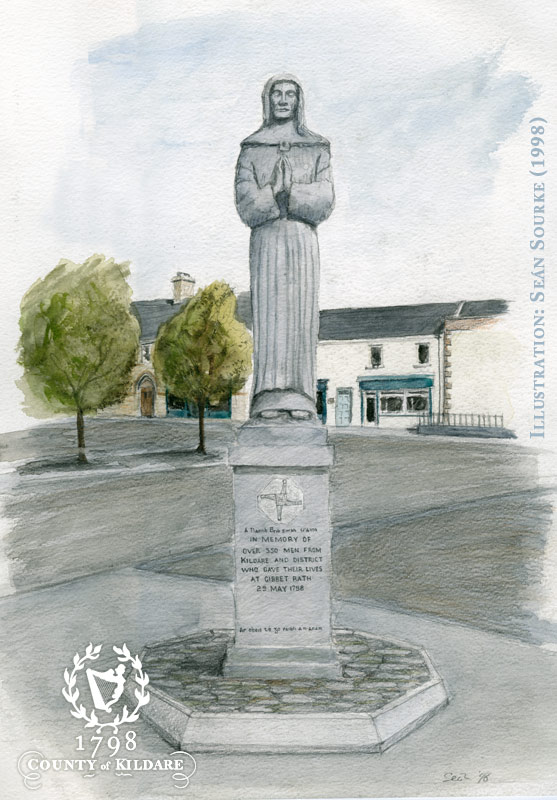Rebellion Towns & Villages

Kildare Town
Around 2 p.m. on Thursday 24th of May, General Wilford ordered his troops out of Kildare as the military regrouped in Naas in accordance with the orders of General Dundas. Their baggage and captured rebel arms were lodged in the guard-house. Wilford left orders that these should be destroyed but they eventually ended up in rebel hands. About an hour after the departure of the troops, a bell was sounded to rouse the United Irish forces – by nightfall there were 2,000 rebels under Roger McGarry of Moortown, in Kildare.
That night George Crawford, a sergeant in Taylor’s yeomanry, and his 14 year old granddaughter were murdered by a party of rebels. Mrs. Crawford barely escaped with her life.
Around 11 p.m. the Limerick mail coach was stopped and plundered in Kildare. One of the passengers, 17 year old Lieutenant William Gifford, of the 82nd Regiment, was shot and piked when he refused to join the rebels.
Sometime around 1.00 a.m. on the morning of the 25th, the rebels marched out to attack Monasterevin, but were repulsed on their arrival by the local yeomanry.
Many of the rebels from the Kildare town area died in the massacre at the Gibbet Rath near the town on May 29th. There were 85 widows in Claregate Street the following day.

On the night of the 7th of June parts of the town were burnt by the rebels and the fires extinguished by the troops. Early in the morning of June 8th the rebels again set fire to parts of the town and once again the soldiers had to put out the flames. General Duff (garrisoned at Monasterevin) discovered these fires on his way to and from Kilcullen – he believed it was an attempt to disrupt the military.
Rebellion Towns & Villages
Naas | Ballymore | Old Kilcullen | Knockaulin | Narraghmore | Ballitore | Athy | Monasterevin | Kildare Town | Rathangan | Gibbet Rath | Clane | Prosperous | Timahoe | Ovidstown | Surrender
